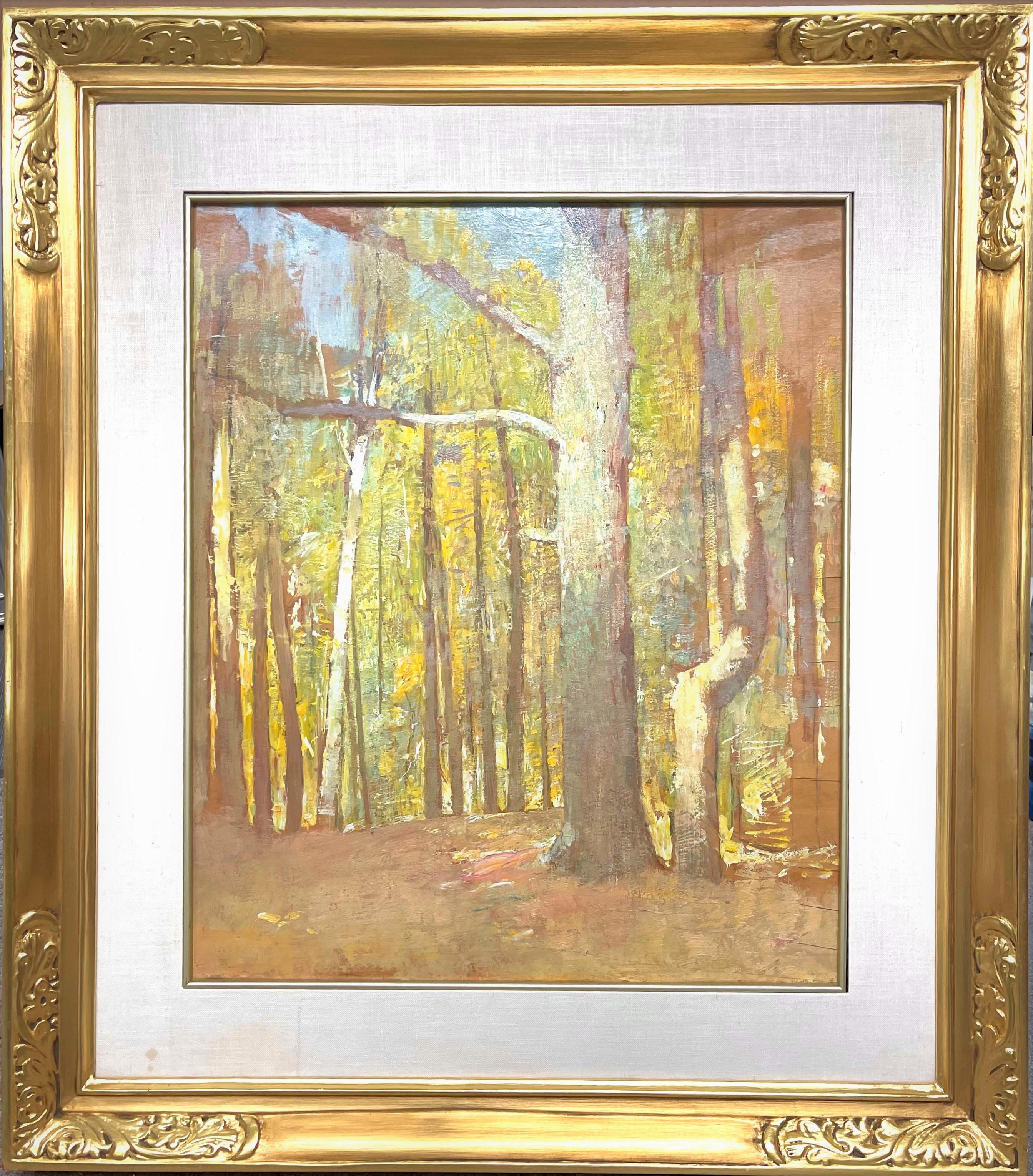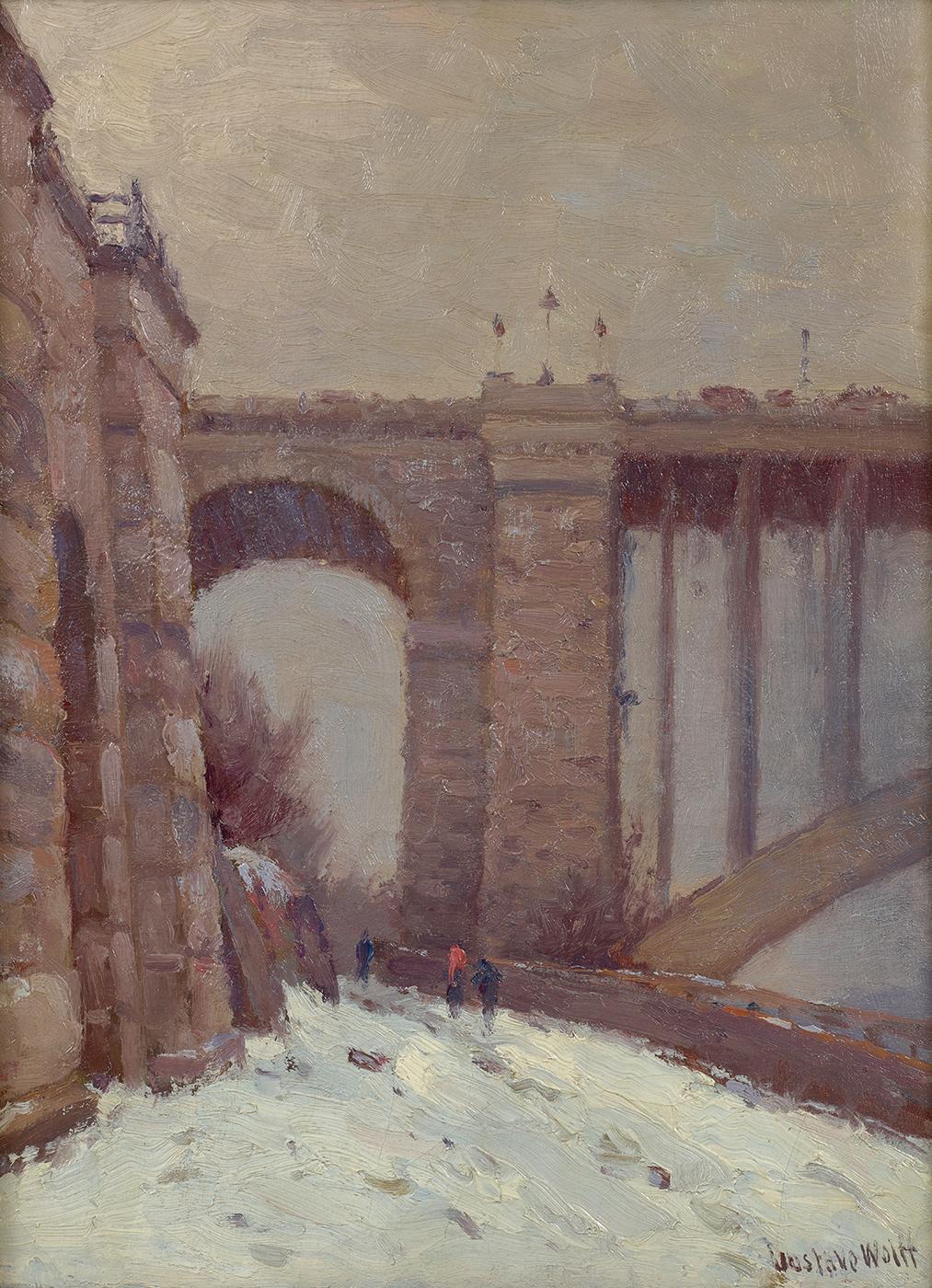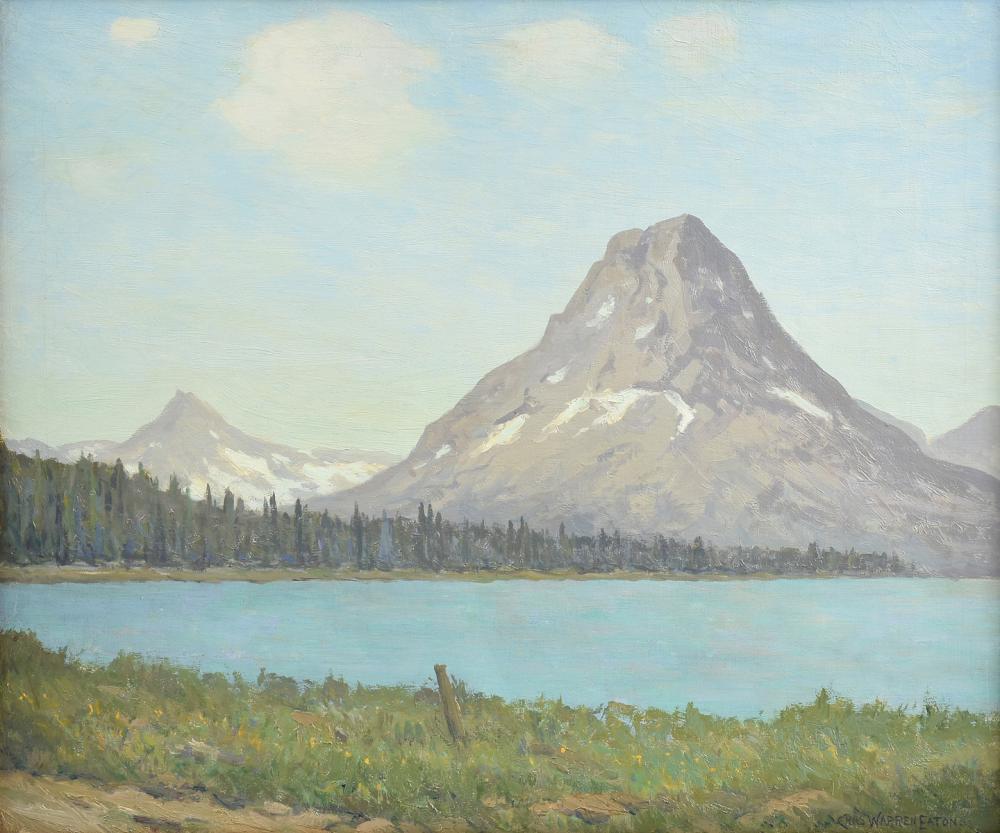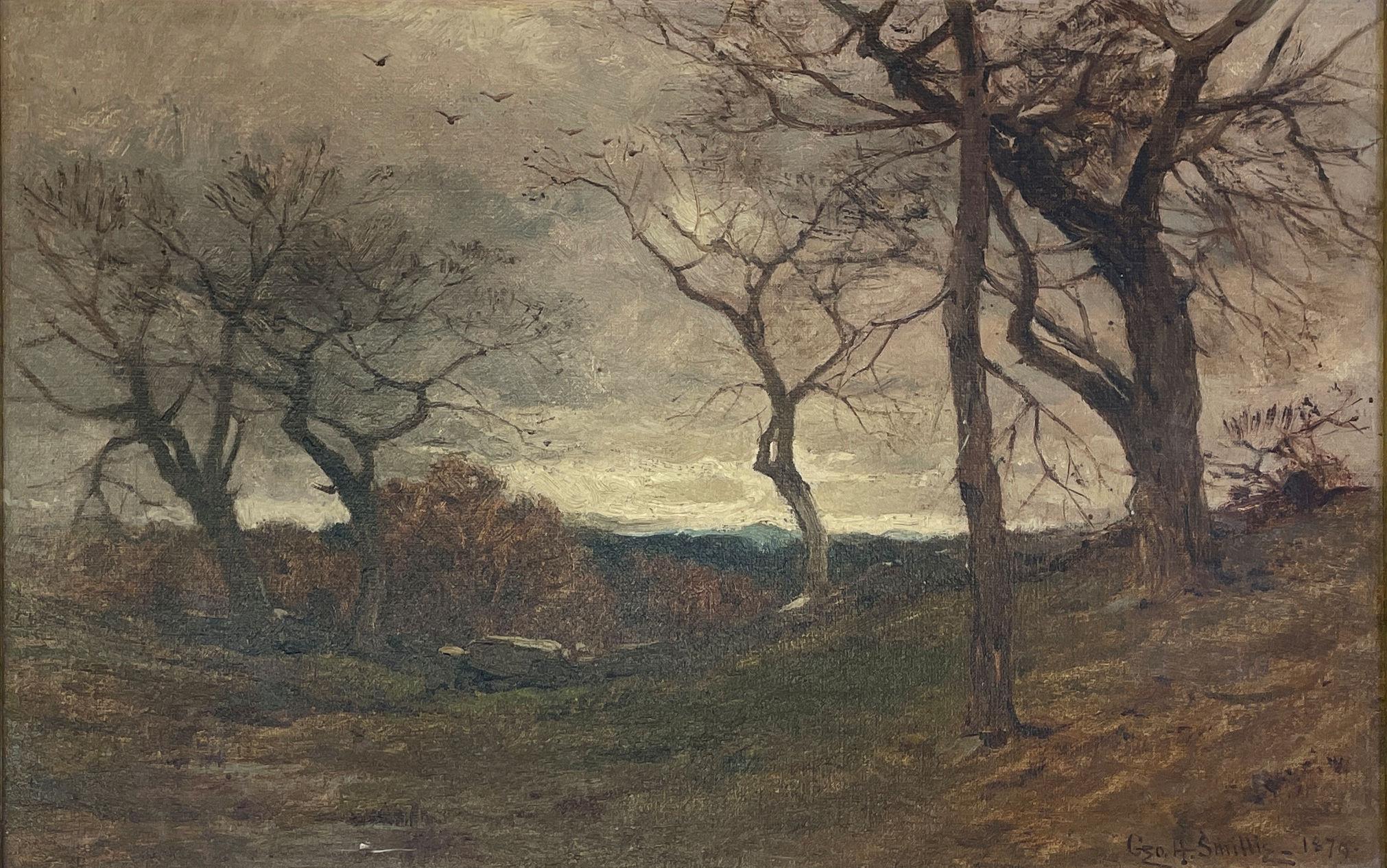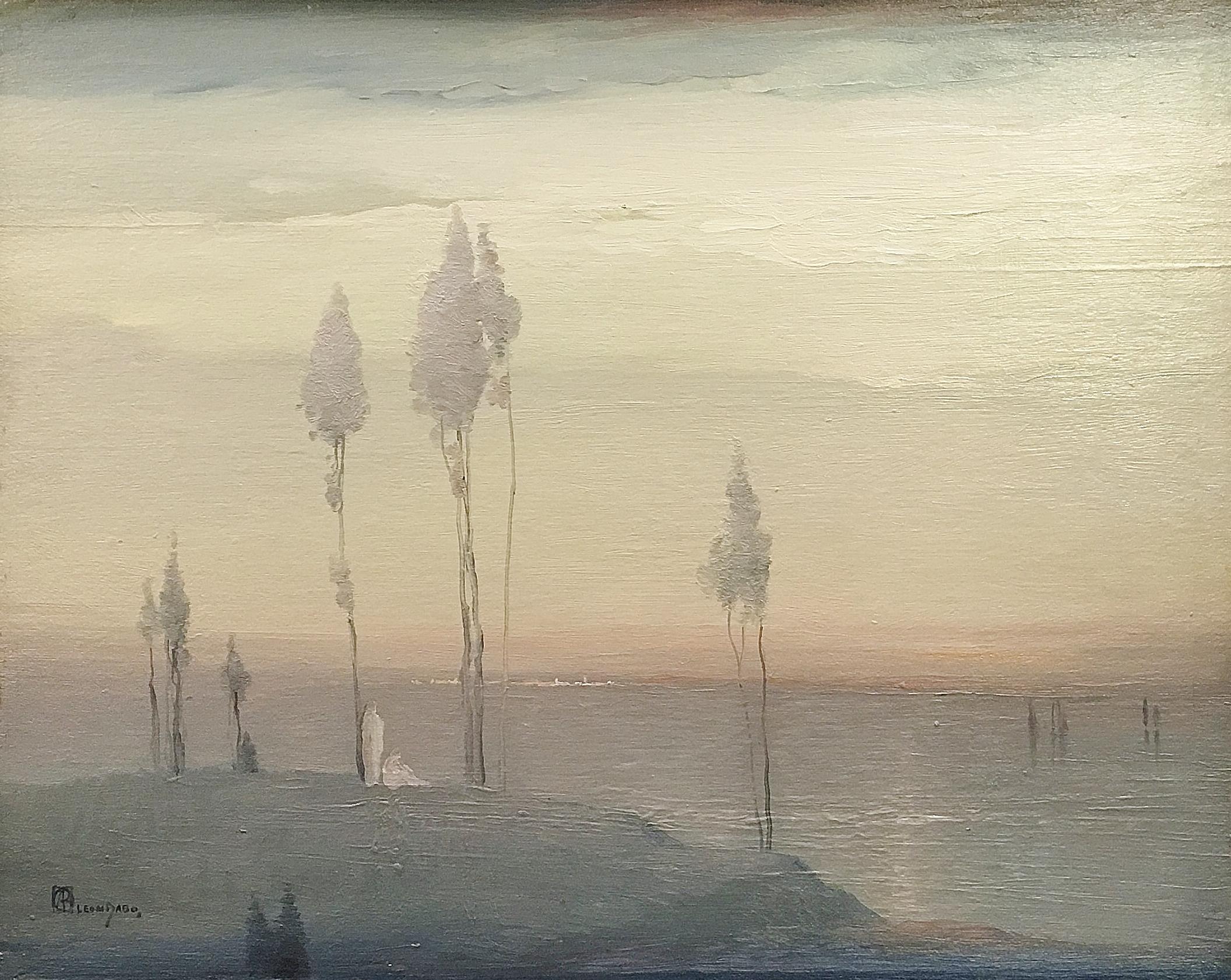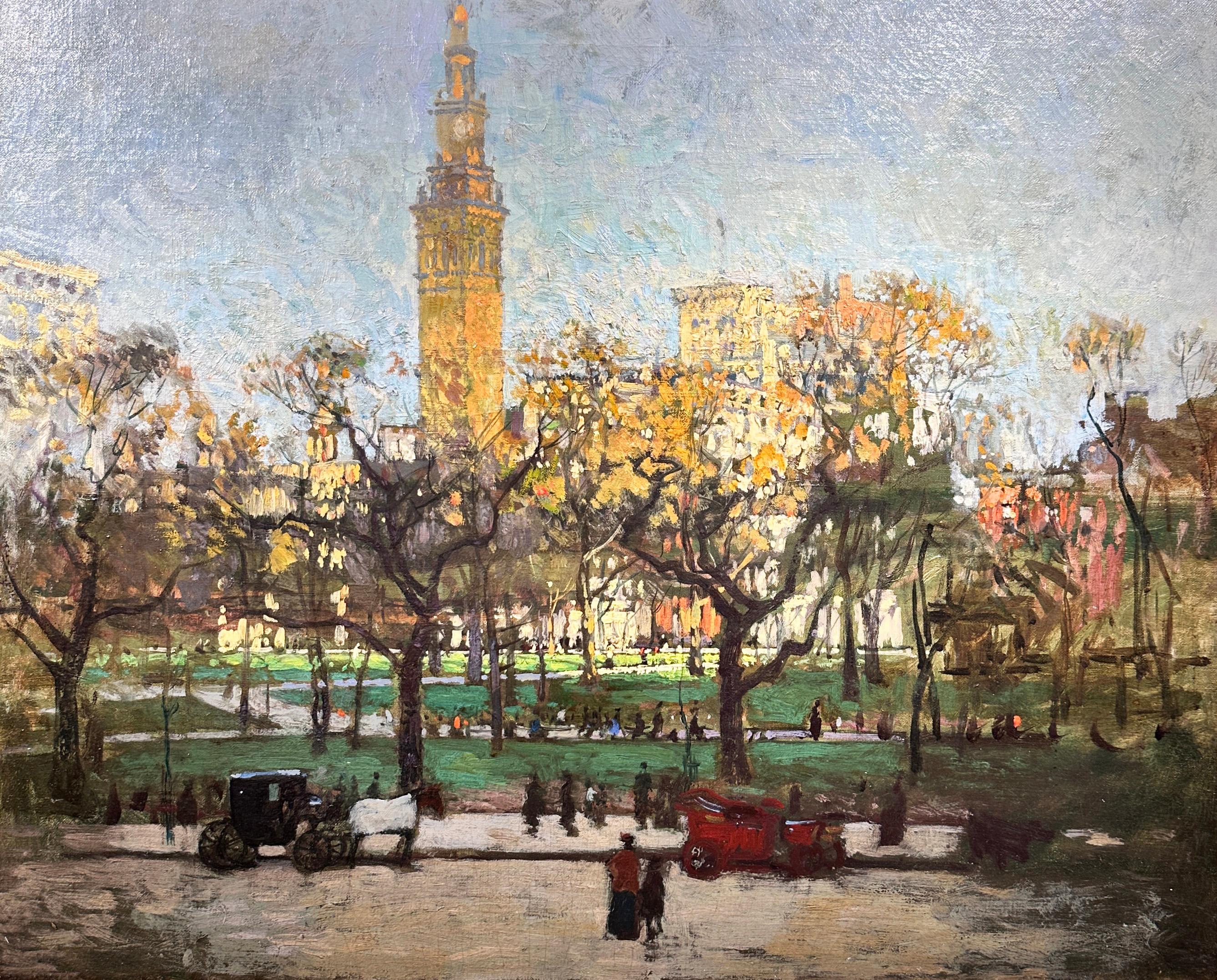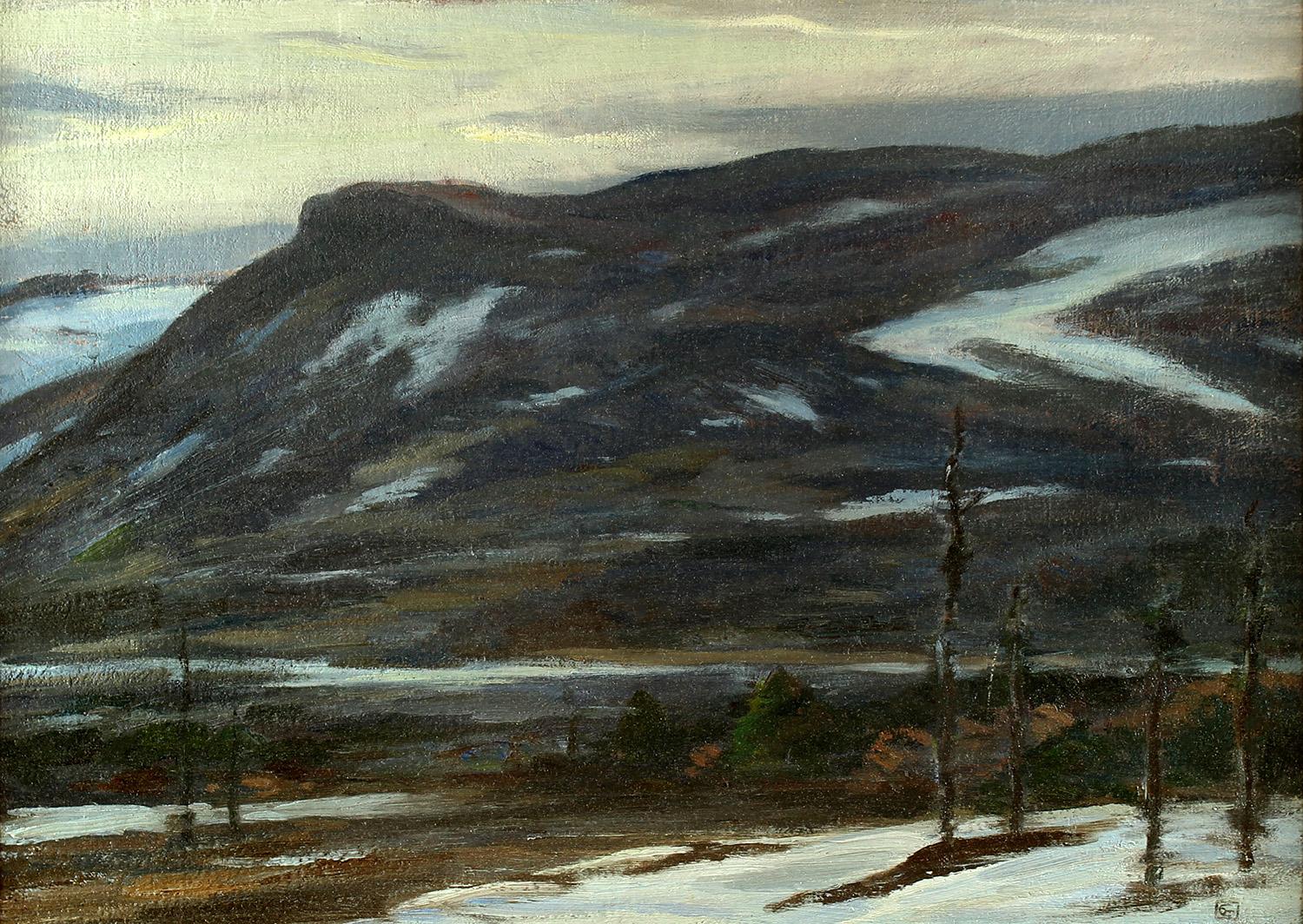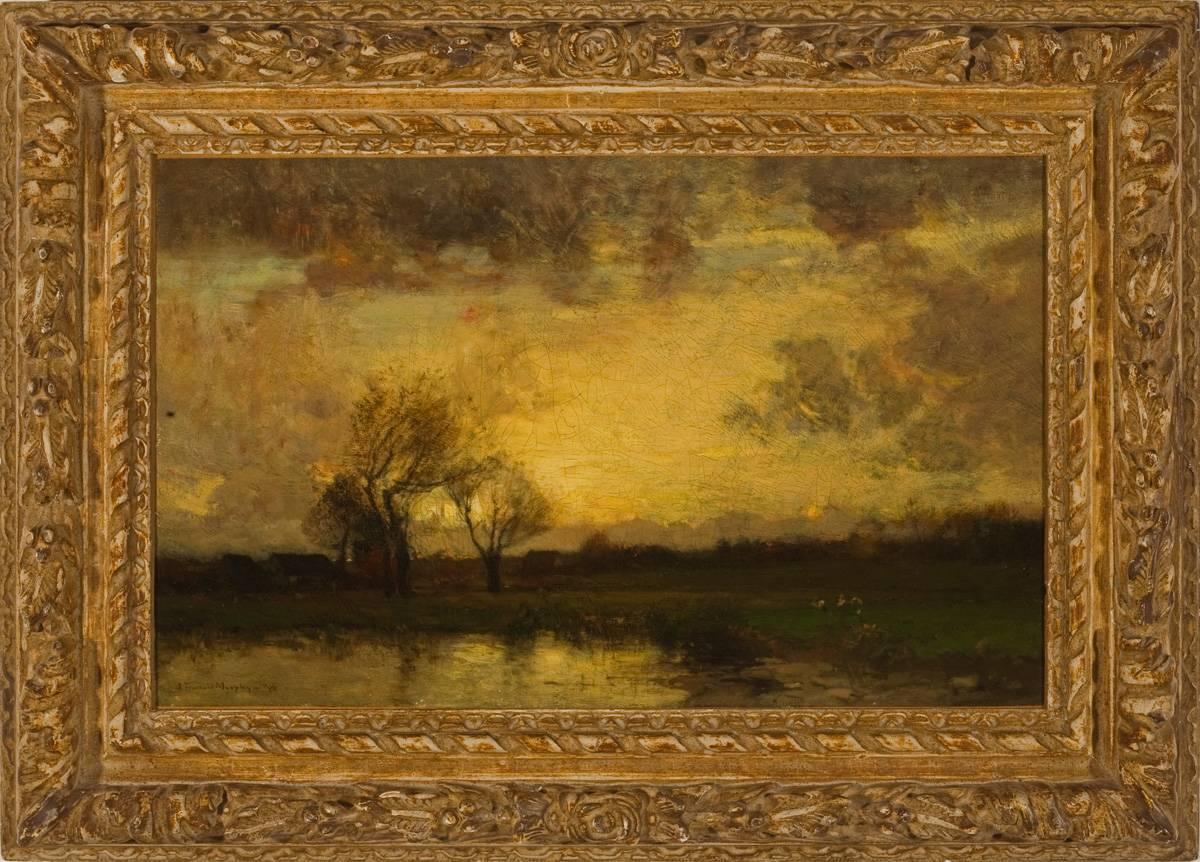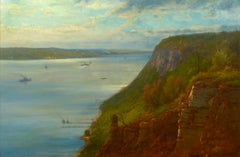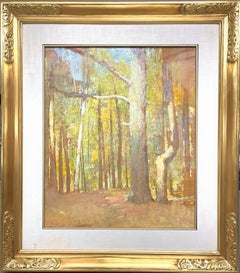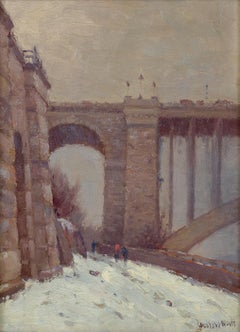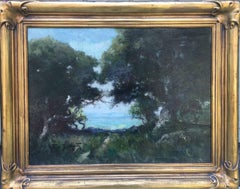
Opening Through the Trees
View Similar Items
1 of 5
Arthur BeckwithOpening Through the TreesC1890
C1890
About the Item
- Creator:Arthur Beckwith (1860 - 1930, American)
- Creation Year:C1890
- Dimensions:Height: 12 in (30.48 cm)Width: 16 in (40.64 cm)
- Medium:
- Movement & Style:
- Period:
- Condition:
- Gallery Location:Graton, CA
- Reference Number:1stDibs: LU31021041623
You May Also Like
- Palisades on the HudsonBy George InnessLocated in New York, NYSigned lower right: G. InnessCategory
19th Century Tonalist Landscape Paintings
MaterialsOil
- Emil Carlsen American Impressionist landscape oil Painting Salmagundi ClubBy Soren Emil CarlsenLocated in Chesterfield, NJYellow Landscape/Wood Interior/Birch Forest 3 different titles on 3 labels DESCRIPTION Yellow Landscape oil /panel bears Florence G. Carlsen Estate stamp on Brett Mitchell Collecti...Category
Early 20th Century Tonalist Landscape Paintings
MaterialsOil
- High Bridge, New YorkBy Gustave WolffLocated in New York, NYSigned lower right: Gustave WolffCategory
20th Century Tonalist Landscape Paintings
MaterialsOil
- Winter RooftopsBy Gustave WolffLocated in New York, NYSigned lower right: Gustave WolffCategory
20th Century Tonalist Landscape Paintings
MaterialsOil
$13,500 - "Mount Rockwell, Glacier National Park, Montana, " Mountain Lake Landscape ViewBy Charles Warren EatonLocated in New York, NYCharles Warren Eaton (1857 – 1937) The Shadow of Mount Rockwell, Glacier National Park, Montana, 1921 Oil on canvas 20 x 24 inches Signed lower right: CHAS WARREN EATON. Provenance: The artist The Macbeth Gallery, New York Private Collection Sotheby's New York, American Art, April 14, 1989 ConocoPhillips, Houston Simpson Galleries, Houston, Fine Art & Antiques, May 18, 2019, Lot 447 Exhibited: New York, The Macbeth Gallery, Paintings of Glacier National Park by Charles Warren Eaton, December 13, 1921 - January 2, 1922, no. 2. Literature: "Two Exhibitions at Macbeth's," American Art News, New York, Vol. XX, No. 10, December 17, 1921. A contemporary critic wrote that the paintings of Charles Warren Eaton appeal to “the dreamers who find in them the undiscovered scenes in which their fancy long has dwelt.” Eaton’s contemplative landscapes exude a spiritual quality that moves the observer into a similar frame of mind. He loved to depict the ethereal light of dawn and dusk in late autumn or winter, usually without any reference to human or animal figures or buildings. These Tonalist paintings, with their subdued palette and relatively intimate scale, marked a definite break with the fading popularity of the panoramic and romantic views of the Hudson River School painters. Charles Warren Eaton was born in Albany, New York to a family of limited means. He began painting while working in a dry-goods store. At age 22, he enrolled at the National Academy of Design in New York City and then studied figure painting at the Art Students League. By 1886, he was successful enough to quit his day job and make a living as a landscape painter. That year, he traveled to Europe with fellow Tonalist painters Leonard Ochtman and Ben Foster. In France, Eaton visited popular artist’s spots such as Paris, Fontainebleau and Grez-sur-Loing, and fell in love with the loose brushwork and moody style of French Barbizon painting. Returning to the United States, Eaton fell under the spell of George Inness, the foremost exponent of Barbizon style in the United States. In 1888, Eaton settled near Inness in Bloomfield, New Jersey, where Eaton lived until his death in 1937. In this period, he painted shadowy and ambiguous landscapes inspired by rural scenery in the northeastern United States. His signature theme was a cropped view of the branches, trunks, and foliage of a pine grove silhouetted against a delicately illuminated sunset or moonlit sky. He painted this vision so often between 1900 and 1910 that he picked up the sobriquet ‘‘The Pine Tree Painter.” After 1910, Eaton responded to the popularity of Impressionism by using brighter colors and painting sunlit daytime scenes. In 1921, he was hired to paint Glacier Lake, in Glacier National Park by the Great Northern Railroad Company as part of their ‘See America First’ campaign. He produced more than 20 paintings, among the artist's last works, that now poignantly remind viewers of the vast disappearing glaciers. Eaton tended to approach this mountain scenery from an oblique vantage point; he liked to capture small episodes, showing mountaintops nearly obscured by dramatically attenuated screens of fir trees. Eaton, like many Tonalist artists of his generation such as Henry Ward Ranger, John Francis Murphy, and Charles Melville Dewey...Category
1920s Tonalist Landscape Paintings
MaterialsCanvas, Paint, Oil
- "Stone Wall, Autumn, " George Smillie, Tonalist Fall Landscape ViewBy George Henry SmillieLocated in New York, NYGeorge Henry Smillie (1840 - 1921) Stone Wall, Autumn, 1879 Oil on canvas 9 1/2 x 15 inches Signed and dated lower right Provenance: Skinner, Boston, September 19, 2014, Lot 389 The career of George Smillie (1840-1921) followed the arc of nineteenth-century U.S. landscape painting. Trained in the Hudson River School tradition, Smillie successfully adapted to changing U.S. tastes and growing interest in European trends. In the late 1800s, he moved to tonalist paintings full of brushwork and influenced by French Barbizon painting. By the end of his career, he had lightened his palette to produce works similar to those of the U.S. impressionists. Yet in all styles, he was never less than competent, and his tonalist work is among the best produced in the United States. Like many nineteenth-century painters, George Smillie’s artistic training began with the study of printing. His father, James Smillie...Category
1870s Tonalist Landscape Paintings
MaterialsOil, Canvas

